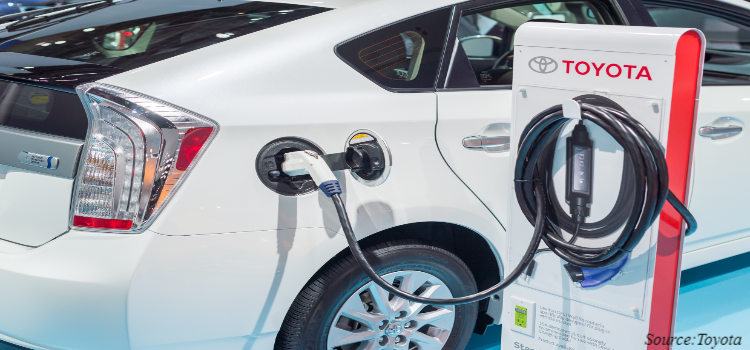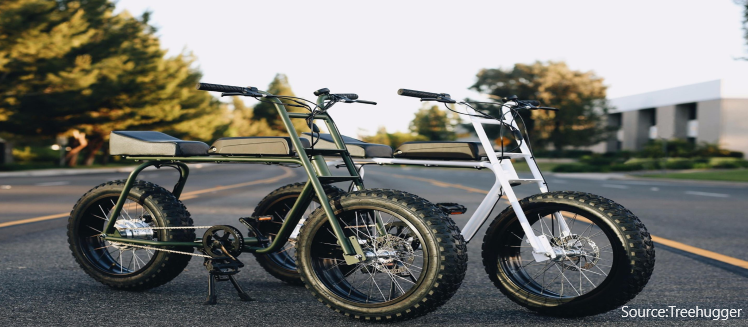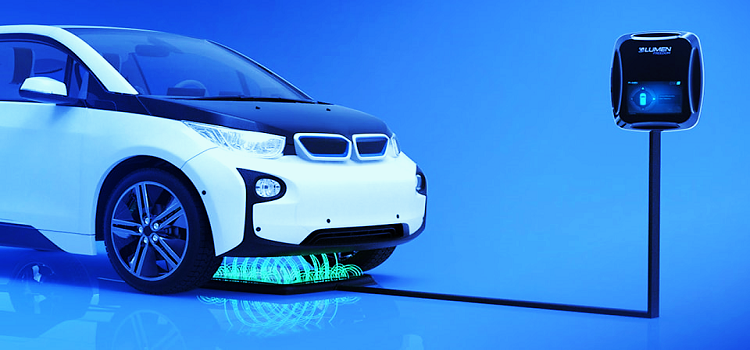
Delta Robots Market by Axis Type (Double Axis, Three Axis, Four Axis, Five Axis, and Six Axis), by Payload Capacity (Up to 3 Kilogram, 3.1 to 8 Kilogram, 8.1 to 15 Kilogram, and More than 15 Kilogram), by Version Environment (Standard and Hygiene), by Application (Assembly, Pick & Place, Material Handling, Palletizing/Packaging, and Others), by Industry Vertical (Electronics, Cosmetics, Food & Beverages, Pharmaceuticals, and Others) – Global Opportunity Analysis and Industry Forecast, 2024–2030
Industry: Automotive & Transportation | Publish Date: 03-Jun-2024 | No of Pages: 609 | No. of Tables: 504 | No. of Figures: 469 | Format: PDF | Report Code : N/A
Market overview
The global Delta Robots Market size was valued at USD 2.39 billion in 2022, and is expected to reach USD 6.14 billion by 2030, with a CAGR of 11.6% from 2023 to 2030. Delta robots, also known as parallel robots or spider robots, are characterized by three or more arms connected to a common base, typically arranged in a triangular or pyramid-like configuration. The design of delta robots allows high-speed and precise movements in three-dimensional space.
Delta robots are renowned for their exceptional speed and agility, making them well-suited for tasks that require rapid and precise motion, such as pick-and-place operations in manufacturing. They are versatile, and can be used in various applications, including electronics assembly, food and beverage processing, pharmaceutical manufacturing, and others.
Increasing Demand for Automation in the Electronic Industry Drives the Market Growth
The growth of the electronic industry has become a major driving force behind the expansion of the delta robots market. The electronic industry utilizes delta robots for various applications, such as pick and place operations, soldering, and assembling intricate electronic components.
Additionally, as electronic devices continue to shrink in size and complexity, the need for robots capable of handling minuscule components in tight spaces has become increasingly critical, and delta robots excel in this domain. Consequently, the growth of the electronic industry has fueled the demand for delta robots and positioned them as a crucial enabler of innovation and efficiency within electronic manufacturing processes. According to the International Federation of Robotics, the electronics industry outpaced the automotive sector in annual robot installations in 2020, accounting for 26% of all installations. On the other hand, the automotive industry accounted for 23% of the total robots installed.
Rising Adoption of Automation in the Manufacturing Industry Fuels the Market Growth
The increasing adoption of automation within the processed food and pharmaceutical manufacturing industries is a driving force behind the remarkable growth of the delta robots market. These industries are witnessing a profound shift toward greater automation as they meet evolving consumer demands, enhance production efficiency, and maintain stringent quality control. Renowned for their remarkable speed and precision, these robots are adept at handling tasks, such as packaging, labeling, and sorting.
Moreover, these robots are instrumental in automating critical tasks, such as vial filling, capping, and labeling. By streamlining these intricate processes, pharmaceutical manufacturers are bolstering their productivity, meeting market needs more promptly, and reducing the time-to-market for vital medications. As these industries evolve and expand, the delta robots market is poised for sustained growth and ongoing innovation, with these robots serving as vital enablers of progress.
The High Cost of Delta Robots Hinders the Market Growth
The high cost of delta robots presents a substantial restraint for the market growth. These robots, known for their precision and efficiency, often come with a price tag that can pose a hindrance for adoption in many businesses, particularly small and medium-sized enterprises (SMEs). Additionally, the extended return on investment (ROI) period due to high upfront costs can deter companies seeking more immediate cost savings and efficiency improvements. This situation hinders market growth and contributes to market concentration, with only larger corporations able to afford and benefit from this advanced automation technology.
Integration of Advanced Technologies to Enhance Precision Creates Market Opportunities
Integrating advanced technologies, such as computer vision and artificial intelligence (AI), to enhance precision represents a significant opportunity for the delta robots market. These cutting-edge technologies enable delta robots to operate more accurately and efficiently, opening up new avenues for applications across various industries.
The integration of computer vision and AI not only enhances precision but also improves overall productivity and reduces errors in manufacturing processes. This can result in cost savings, higher product quality, and increased competitiveness for businesses that leverage delta robots with these advanced technologies. As industries continue to embrace automation and demand higher precision and flexibility, the delta robots market is poised to benefit significantly from the opportunities created by integrating computer vision and AI.
Asia-Pacific Holds the Dominant Market Share in the Global Market
The growing demand for delta robots in the Asia-Pacific region is primarily driven by the rapid expansion of the manufacturing industry and strong government support. China's status as the world's largest manufacturer, responsible for approximately 28% of global manufacturing output, significantly impacts the demand for delta robots. Also, in August 2021, the Government of India announced an initiative called SAMARTH Udyog Bharat 4.0 to promote the Industry 4.0. It is a new industrial revolution focusing heavily on interconnectivity, automation, machine learning, and real-time data. It integrates the Internet of Things (IoT) or smart digital technology, machine learning, and big data with physical operations, which are required to use robots to create a better-connected ecosystem for companies and industries. This, in turn, further boosts the growth of the delta robots in this region.
Moreover, the presence of influential market leaders, such as Fanuc Corporation, KUKA AG, Kawasaki Robotics, and Yaskawa, significantly shapes the landscape of the delta robots industry. These companies are actively involved in developing, producing, and distributing delta robots, driving innovation and competition in the market. Their expertise and extensive resources contribute to the continuous improvement of delta robot technology, making it more accessible and efficient for various industries. For instance, in February 2023, KUKA introduced the KR 3 D1200, a novel delta robot optimized for food handling, capable of swift pick-and-place operations with a maximum payload of 6 kilograms. This exceptionally light and durable robot reduces maintenance costs and improves productivity.
North America is Expected to Show Steady Growth in the Global Delta Robots Market
The rising initiatives taken by the government in various countries of North America increase the adoption of robotics in different industries, which, in turn, drives the growth of the market. For instance, in April 2023, the Canadian government invested about USD 1.4 billion in funding toward research in emerging technologies such as AI, robotics, carbon capture, and healthcare. This funding will be distributed among 11 universities. This, in turn, boosts the market growth.
Moreover, the presence of industry players actively introducing innovative delta robot products tailored to diverse end-user requirements is a driving force behind the market expansion. Furthermore, North America is home to major companies, such as Abbott Laboratories, Johnson & Johnson, Pfizer Inc., and Merck & Co., which has significantly boosted industry efficiency and product quality by integrating delta robots into precision pharmaceutical manufacturing and packaging processes.
For instance, in March 2021, ST Robotics unveiled the ST R18 Delta Robot System, the most recent inclusion in its affordable industrial robot lineup. This innovative Delta Robot was explicitly designed to meet the demands of swift pick-and-place operations in recycling plant conveyor systems. The ST R18 Delta industrial robot turnkey solution draws inspiration from the Igus drylin delta robot but incorporates ST's K11R robot controller, enabling significantly increased speeds. It can complete a standard 12-inch cycle in a mere 500 milliseconds, and as a result, it is placed on high-speed picking and placing on recycling plant conveyors.
Competitive Landscape
Several market players operating in the delta robots industry include ABB, Ltd., FANUC Corporation, Yaskawa Electric Corporation, Omron Corporation, KUKA AG, FESTO, Kawasaki Heavy Industries, Ltd., Weiss GmbH, IGUS GmbH, and Cama Group. These market players are adopting strategies, such as product launches, across various regions, to maintain their dominance in the global market.
For instance, in November 2022, KUKA AG expanded its KUKA Hygienic Oil (HO) portfolio of delta robots with KR 3 D1200. This robot can perform various pick-and-place tasks at an unattainable high speed. This particular robot is designed for carrying a load capacity of up to 6 kilograms.
Moreover, in June 2022, Kawasaki Heavy Industries, Ltd. collaborated with a delta robots and automation system provider Realtime Robotics, Inc. This collaboration aims to automate the programming, deployment, and control of its industrial delta robots. It enables real-time control (RTC) by advanced users to execute complex and irregular applications.
Delta Robots Market Key Segments
By Axis Type
-
Double Axis
-
Three Axis
-
Four Axis
-
Five Axis
-
Six Axis
By Payload Capacity
-
Up to 3 Kilogram
-
3.1 to 8 Kilogram
-
8.1 to 15 Kilogram
-
More than 15 Kilogram
By Version Environment
-
Standard
-
Hygiene
By Application
-
Assembly
-
Pick & Place
-
Material Handling
-
Palletizing/Packaging
-
Others
By Industry Vertical
-
Electronics
-
Cosmetics
-
Food & Beverages
-
Pharmaceuticals
-
Others
By Region
-
North America
-
The U.S.
-
Canada
-
Mexico
-
-
Europe
-
The U.K.
-
Germany
-
France
-
Italy
-
Spain
-
Netherlands
-
Rest of Europe
-
-
Asia-Pacific
-
China
-
Japan
-
India
-
Australia
-
South Korea
-
Taiwan
-
Vietnam
-
Rest of Asia-Pacific
-
-
Rest of the World (RoW)
-
Latin America
-
Middle East
-
Africa
-
Report Scope and Segmentation
|
Parameters |
Details |
|
Market Size in 2022 |
USD 2.39 Billion |
|
Revenue Forecast in 2030 |
USD 6.14 Billion |
|
Growth Rate |
CAGR of 11.6% from 2023 to 2030 |
|
Analysis Period |
2022–2030 |
|
Base Year Considered |
2022 |
|
Forecast Period |
2023–2030 |
|
Market Size Estimation |
Billion (USD) |
|
Growth Factors |
Increasing demand for automation in the electronic industry |
|
Countries Covered |
21 |
|
Companies Profiled |
10 |
|
Market Share |
Available for 10 companies |
|
Customization Scope |
Free customization (equivalent up to 80 working hours of analysts) after purchase. Addition or alteration to country, regional, and segment scope. |
|
Pricing and Purchase Options |
Avail customized purchase options to meet your exact research needs. |
Key Players
-
ABB, Ltd.
-
FANUC Corporation
-
Yaskawa Electric Corporation
-
Omron Corporation
-
KUKA AG
-
FESTO
-
Kawasaki Heavy Industries, Ltd.
-
Weiss GmbH
-
IGUS GmbH
-
Cama Group




 Speak to Our Analyst
Speak to Our Analyst


































